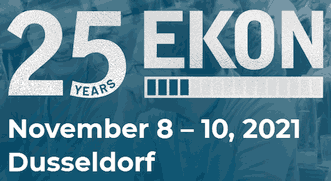In order to follow best practice, our .private key files are
always protected by a password. A random value with enough length and
entropy is always proposed by the ECC tool when a key pair is
generated, and could be used directly.
It is always preferred to trust a computer to create true randomness (and
SynCrypto.pas's secure TAESPRNG was designed to be
the best possible seed, using hardware entropy if available), than using our
human brain, which could be defeated by dictionary-based password
attacks.
Brute force cracking would be almost impossible, since
PBKDF2_HMAC_SHA256 Password-Based Key Derivation Function with
60,000 rounds is used, so rainbow tables (i.e. pre-computed passwords list)
will be inoperative, and each password trial would take more time than with a
regular Key Derivation Function.

The issue with strong passwords is that they are difficult to remember. If
you use not pure random passwords, but some easier to remember values with good
entropy, you may try some tools like https://xkpasswd.net/s which returns values like
$$19*wrong*DRIVE*read*61$$.
But even then, you will be able to remember only a dozen of such passwords. In
a typical public key infrastructure, you may create hundredths of keys, so
remembering all passwords is no option for an average human being as (you and)
me.
At the end, you end up with using a tool to store all your passwords (last
trend is to use an online service with browser integration), or - admit it -
store them in an Excel document protected by a password. Most IT
people - and even security specialists - end with using such a mean of storage,
just because they need it.
The weaknesses of such solutions can be listed:
- How could we trust closed source software and third-party online
services?
- Even open source like http://keepass.info/help/base/security.html
may appear weak (no PBKDF, no AFSplit, managed C#, SHA as PRNG);
- The storage is as safe as the "master password" is safe;
- If the "master password" is compromised, all your passwords are
published;
- You need to know the master password to add a new item to the store.
The ECC tool is able to work in "cheat mode", storing all
.private key files generated passwords in an associated
.cheat local file, encrypted using a cheat.public
key.
As a result:
- Each key pair will have its own associated
.cheat file, so you
only unleash one key at a time;
- The
.cheat file content is meaningless without the
cheat.private key and its master password, so you can manage and
store them together with your .private files;
- Only the
cheat.public key is needed when creating a key pair,
so you won't leak your master password, and even could generate keys in an
automated way, on a distant server;
- The
cheat.private key will be safely stored in a separated
place, only needed when you need to recover a password;
- It uses strong File Encryption, with proven PBKDF, AFSplit,
AES-PRNG, and ECDH/ECIES algorithms.






